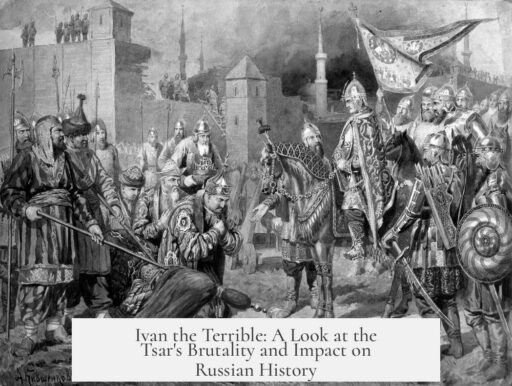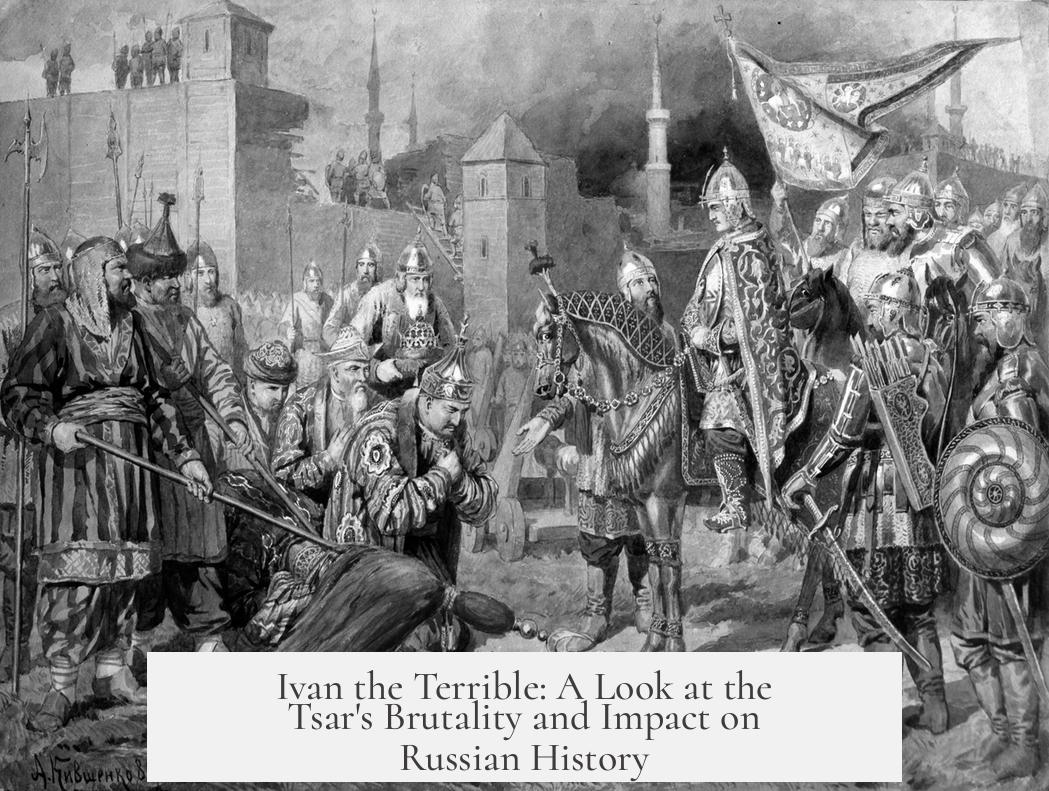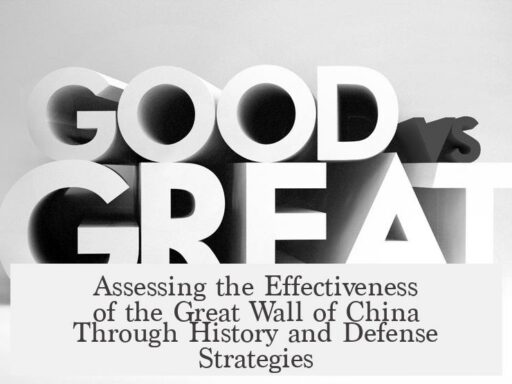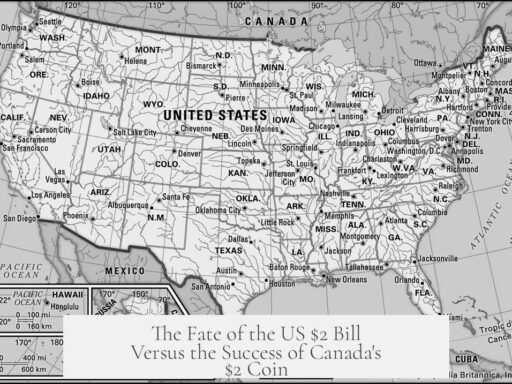Ivan the Terrible earned his fearsome title not simply for cruelty but for inspiring deep terror through brutal policies and harsh rule. His reign shows stark contrasts: a capable ruler who propelled Russia forward and a paranoid tyrant who inflicted widespread suffering.
Ivan IV, crowned the first Tsar of Russia, ruled from 1547 to 1584. Early in his reign, he achieved significant accomplishments. He reformed the civil and religious administration, introduced the printing press to Russia, and expanded territory notably through the conquest of Kazan. Ivan fostered trade relations, notably with England’s Muscovy Company, creating new economic opportunities. His patronage of the arts reflected a cultured side that often gets overshadowed by later events.
However, after the death of his first wife, Anastasia, Ivan’s behavior drastically changed. His paranoia grew, influencing his actions deeply. He established the oprichnina, a state policy designed to suppress and terrorize the aristocracy and anyone suspected of disloyalty. One infamous episode was the brutal sack of Novgorod, driven by fears of rebellion. Ivan even killed his own son in a fit of rage, underscoring his unpredictable cruelty.
Ivan’s reputation for terror is shaped not only by his deeds but also by historical narrative. The Romanov dynasty, which succeeded his ruling family, emphasized his brutality to legitimize their own reign. This complex legacy means that while Ivan was undoubtedly harsh and violent, he was also a pioneering ruler for Russia’s development.
His difficult childhood also offers insight. Losing his father at age three, and likely witnessing the poisoning of his mother at eight, Ivan grew up amid relentless court intrigue. His environment bred deep distrust and paranoia, which bled into his policies and governance style.
| Aspect | Details |
|---|---|
| Early Reign Achievements | Legal reforms, territorial expansion, cultural growth, trade promotion |
| Later Reign Behavior | Paranoia, oprichnina terror, violent purges, sack of Novgorod |
| Historical Context | Romanov dynasty shaped legacy, childhood trauma influenced paranoia |
Ivan did not commit atrocities on the scale of later modern dictators. His title “Terrible” (Грозный) translates better as “fearsome,” reflecting the dread he inspired rather than sheer inhumanity. His reign mixes effective statecraft with brutal repression.
- Ivan’s terror stemmed from paranoia after personal losses and court threats.
- He was an impactful reformer and expansionist early in rule.
- Later actions included state terrorism and purges targeting perceived enemies.
- His reputation was influenced by successors seeking power and control.
How Terrible Was Ivan the Terrible? A Deep Dive Into Russia’s Fearsome Tsar

To answer it straight: Ivan the Terrible was terrible mostly because he inspired fear, not because he earned the usual label of outright cruelty we think of today. The Russian word Грозный attached to him means “fearsome” or “formidable,” not exactly “terrible” as in wicked or monstrous. But fear he did inspire — both from his enemies and his own people.
So, how terrible was he really? Let’s unpack this fascinating, complicated figure.
Ivan’s Early Life: The Seed of Paranoia
Ivan IV’s childhood wasn’t the kind to raise a happy-go-lucky leader. His father died when Ivan was only three. Then, by the time Ivan turned eight, his mother—who served as regent—was suspected of being poisoned. The royal court itself was like a political boxing ring where factions beat each other mercilessly.
Given this chaotic start, Ivan’s paranoia makes more sense. Would you trust anyone after that?
The Great Reformer
Before the dark turn, Ivan actually displays qualities of a remarkable ruler. In his early reign, he revamped civil and religious administration and brought the printing press to Russia—a big deal for spreading knowledge back then. Plus, he expanded Muscovy by conquering Kazan and opened trade channels with Europeans through the Muscovy Company, the world’s first British joint-stock company. That was a savvy move!
Imagine being a Russian merchant back then—suddenly, you have access to Western goods and ideas, all thanks to this “fearsome” czar.
When Terror Takes Over
Unfortunately, Ivan’s reign doesn’t stay shiny. After his beloved wife Anastasia’s suspicious death—some suspected poisoning—he spirals into deep paranoia. The empire watches as Ivan’s policies turn ruthless.
- One of Ivan’s generals defects to Lithuania, sending the czar into a tailspin.
- He even abdicates briefly, only returning after a promise to execute traitors without outside council.
- Fearing rebellion, he sacks Novgorod in a brutal crackdown that devastates the city.
This period, especially under the oprichnina (his personal secret police and oppressive regime), turns much of Russia’s prosperity to dust. Suddenly, the once-promising ruler rules with terror, tormenting his people and nobility alike.
How Brutal Was Ivan Really?
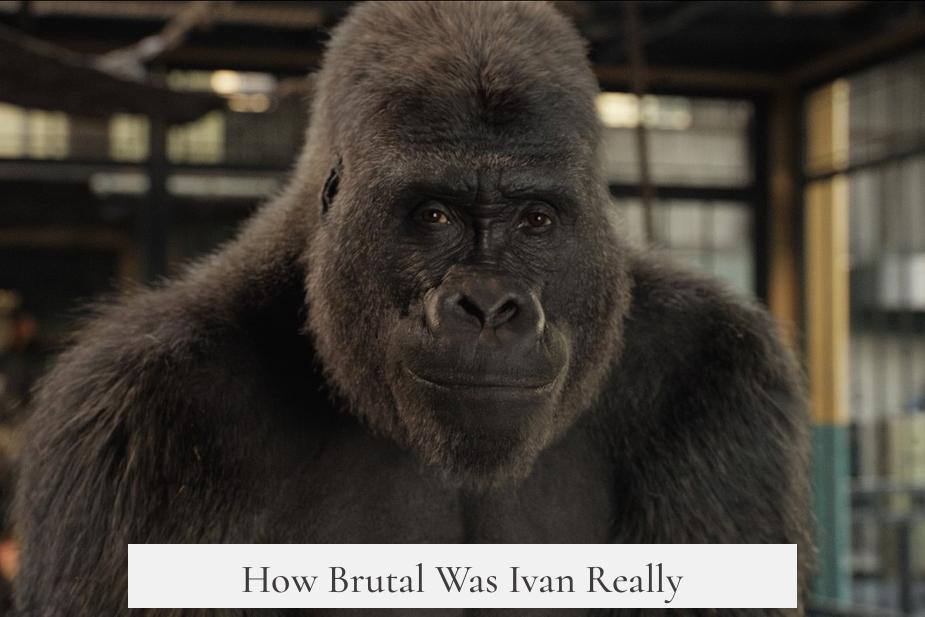
Brutality wasn’t just rumors. Ivan reportedly killed his own son in a fit of rage, a tragic act immortalized by famous artist Illia Repin’s painting depicting that chilling moment.
This shows a ruler capable of deadly cruelty, even to family—hardly saintly by any standards.
The Romanov Effect on Ivan’s Reputation
Interestingly, our judgment of Ivan is partly shaped by the Romanov dynasty, which ruled Russia from 1613 to 1917. The Romanovs had reason to portray Ivan as a villain—to strengthen their own claim to the throne and delegitimize pretenders linked to Ivan’s legacy.
In other words, some of Ivan’s negative image might be propaganda layered over genuine acts of terror.
So, How Terrible Was Ivan the Terrible?
He was terrible enough to be feared and brutal enough to leave scars on Russian history, but he wasn’t a one-dimensional monster. Early achievements show a ruler moving Russia forward. Later paranoia and cruelty bring suffering and chaos. His legacy is messy, a mix of progress and terror.
He wouldn’t stack up favorably against infamous modern dictators in sheer atrocity, but Ivan’s reign is a cautionary tale about what happens when power mingles with paranoia and loss. The man behind the “fearsome” nickname was capable of great state-building and terrifying violence alike.
What Can We Learn from Ivan Today?
Here’s a provocative question: How much does a leader’s personal trauma shape their politics? Ivan’s unpleasant upbringing seems to have led to his fear-driven decisions later on.
It’s a useful reminder—history’s “terrible” figures often have layers beneath their public persona. Sometimes, understanding those layers helps us avoid repeating their mistakes.
Finally, if you visit Russia someday, think twice whether you want to call Ivan “terrible” without the explanation. He was fearsome—yes—but also a key architect of Russia’s rise as a power.
In Closing
Ivan the Terrible wasn’t just a villain or a hero — he was a complex man shaped by his times, his traumas, and wielding immense power. From reformer to ruthless despot, his legacy spans terrifying brutality to visionary leadership.
So, in your own history debates, remember: terror and terrible aren’t always the same, and Ivan’s reign is proof.
Why was Ivan the Terrible called “terrible”?
The name means he inspired fear, not that he was purely evil. It reflects his harshness and the terror he caused neighboring countries, rather than modern definitions of terrible.
How did Ivan’s reign change after his wife’s death?
Her death deeply affected Ivan. He became more paranoid, started the oprichnina, and launched brutal actions like the Sack of Novgorod, which harmed Russia’s stability and prosperity.
Was Ivan the Terrible only a brutal ruler?
No. Early in his reign, he reformed administration, introduced the printing press, expanded territory, and promoted trade. His brutal phase came later, after personal tragedies.
Did Ivan truly kill his own son?
Yes, historical records and famous paintings show he accidentally killed his son during a violent outburst. This event is a key example of his personal brutality.
How much of Ivan’s reputation is shaped by later rulers?
The Romanov dynasty after Ivan’s death worked to vilify him to strengthen their rule. Some negative stories may have been exaggerated to discredit Ivan.
